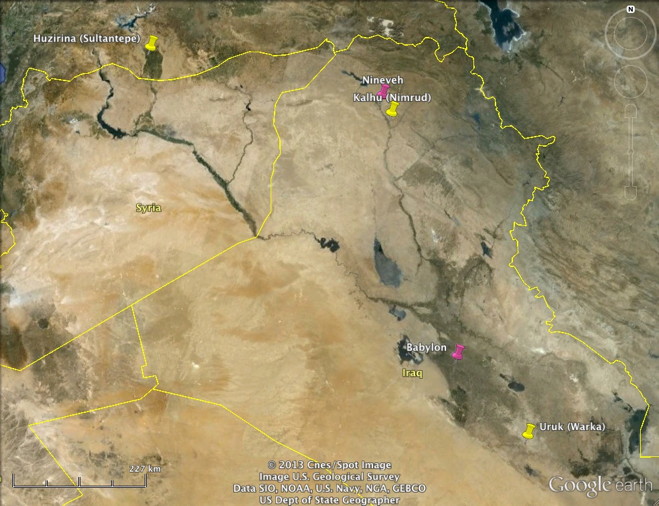Home » Contexts
Contexts
The GKAB project worked on four scholarly 'libraries' of cuneiform tablets the first millennium BC.

Two are from the Neo-Assyrian empire, c.900–600 BC:
- the 'library' of Ezida, the temple of Nabu in Nimrud, ancient Kalhu;
- a 'library' found in Sultantepe, ancient Huzirina.
The two others were unearthed in Babylonia at Uruk and date from the Achaemenid and Hellenistic periods:
- One was found in a private house which was inhabited by āšipus, or 'exorcists', called here the "āšipus' house(s)". There were in fact two different 'libraries' in this building, dating to the Achaemenid and Hellenistic periods respectively;
- The other 'library' was in the Rēš temple and may have been used by the kalûs or lamentation-priests of the shrine.
Tablets illicitly excavated from Seleucid Uruk are also related to these 'libraries'.
Our work on these assemblages challenged us to fundamentally rethink the concept and role of the 'library' in cuneiform culture.